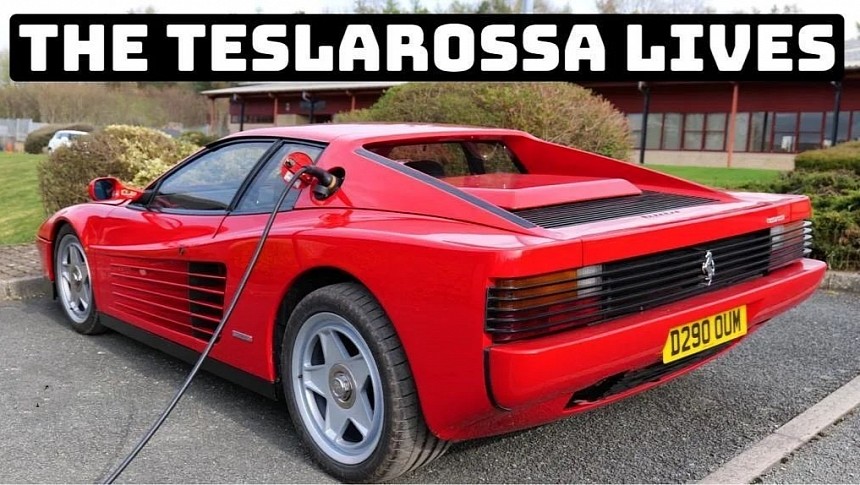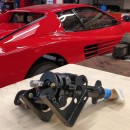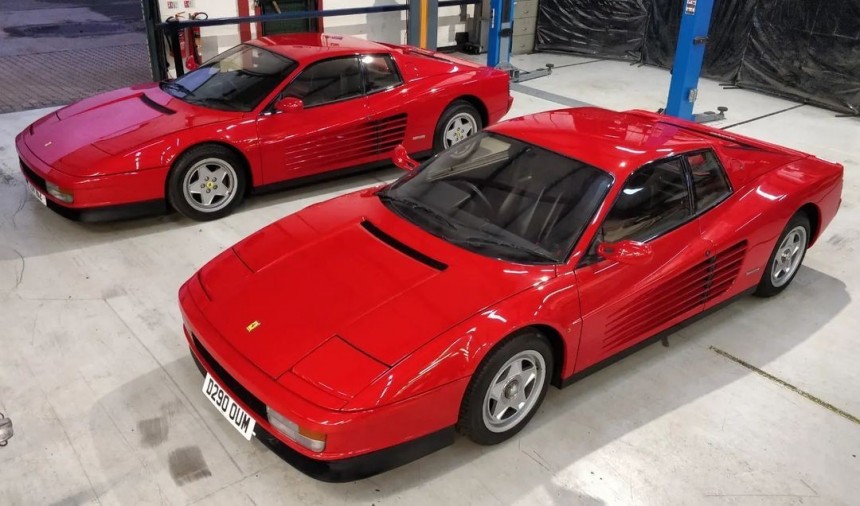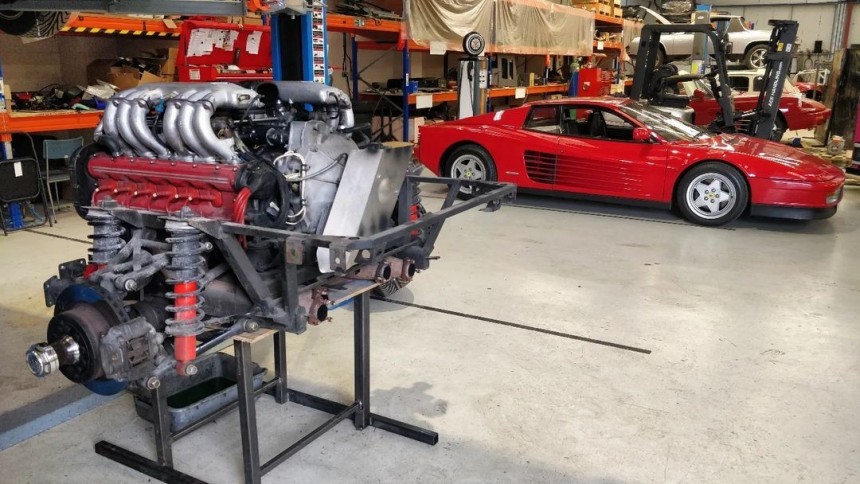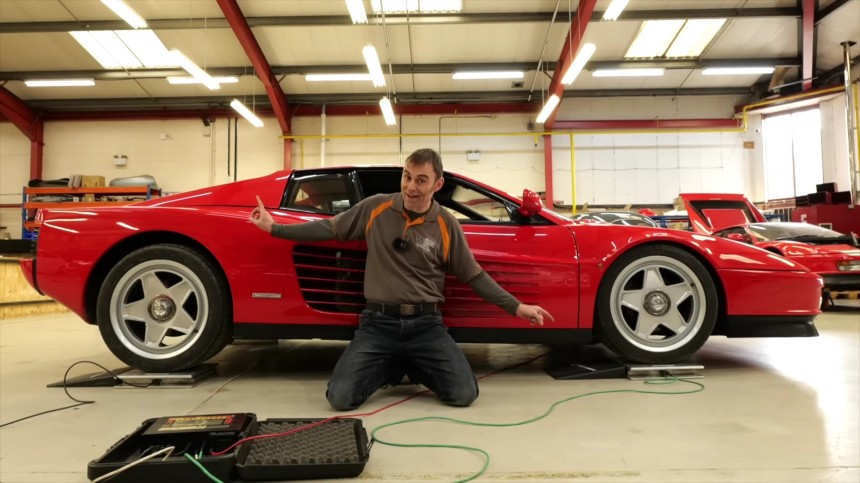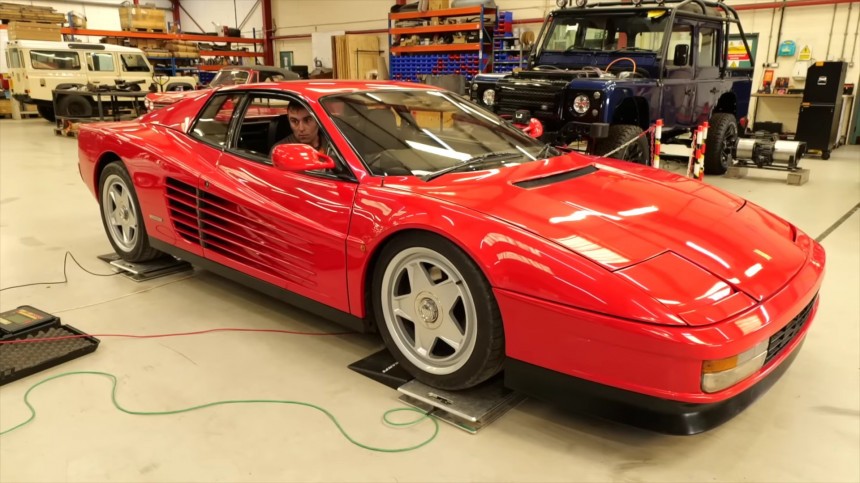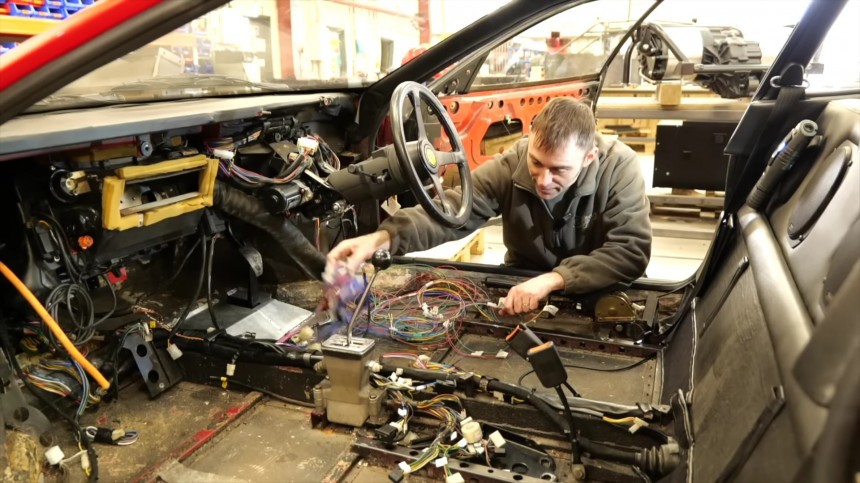Enzo Ferrari and Elon Musk don't necessarily sit at the same table in the pantheon of all-time automobile greats. However, both have left their mark deeply engraved in the evolution of motoring. The Italian granted Planet Piston with some magnificent stallions (count the Ford GT40 in, among others). The South African nearly single-handedly pointed the world toward the natural course of motorcar progress.
I don't mean to divide the internet, but electric cars are superior to traditional hydro-carbon-burning vehicles. I am explicitly referring to the end product alone and strictly from an end-user perspective, not to the whole electrification-of-vehicles paradigm.
After all, if we don't employ icemen to harvest solidified fresh water (and to deliver it to our doors) but prefer pluggable electric refrigerators, it would make sense to extend the same power source to cars.
Neither Enzo nor Elon dreamt of making humankind's life better by following what everyone else was doing - that is what sets these two characters apart from the crowd. The Prancing Horse built a whole new world, and Tesla spurred the trend of smog-free cars.
One of Ferrari's most successful models is the Testarossa, with almost 10,000 units produced between 1984 and 1996. Technically, the supercar's regular production ended in 1991, but two subsequent variants continued for five more years.
On the other hand, Tesla proved that an electric motor – or more – will vastly outperform most combustion engines. Sure, ultra-fundamentalist gearheads will argue that there are exceptions to this rule of thumb, but they're few and far between.
Generally speaking, no reciprocating internal combustion engine in our solar system can give an electric motor a run for its money (when similarly spec'd). Even the Testarossa's formidable – in its heyday – flat-12 would not hold a candle to today's mid-range socket suckers.
This somewhat lengthy maze of introductory information explains how the Enzo-Elon duo has contributed to one of the most intriguing apparitions the automobile has ever seen: an all-electric Ferrari. No, the Italians haven't suddenly expedited their 2025 plans. No, Musk did not extend his outlandishly expensive acquisitions campaign by adding Ferrari to his portfolio.
Both carmaking greats are responsible – although completely obliviously – for this one-off electric conversion of a Ferrari Testarossa. The Italian brand made the car – go figure – and Tesla built a powertrain. The actual fabrication of the vehicle fell on the shoulders of a shop from England going by the name of Electric Classic Cars.
What they do is pretty self-explanatory – they take a classic car (any model from the 50s to the 80s) – kick out the piston power and everything directly related to it (gearbox, differential, cooling, and whatnot), and fit an electric kit instead. Their YouTube channel is host to several projects, documented in detail.
Usually, their custom-made transformations don't boost the recipient automobile with dramatic performance specs. However, this resulting Tesla-Rossa is a giant leap forward from the original Ferrari scores.
The horizontally opposed 12-cylinder 4.9-liter Ferrari plant produced 385 hp and 361 lb-ft (390 PS and 490 Nm). Not bad for its heyday, but a 536-hp / 445 lb-ft (544-PS / 600-Nm) motor is quite an improvement.
Pound for pound, the car gained some 42 kg (almost 100 lbs.) after the electrification – due to a 63-kWh battery pack – putting it at just over 1.7 tons. Several necessary modifications were performed, apart from the powertrain swap. The below video is the latest – but not last – episode documenting the thorough transformation from Ferrari legend to… either an abomination or adoration.
First, the regular brakes were replaced with a regenerative system. Next, the suspension will get adjusted for the new weight distribution ratio. The original wheels were also replaced for practical reasons.
Fatter tires are recommended to cope with the copious amounts of electric power. The original rubbers’ weird oval profile provided a smaller-than-ideal ground contact surface. Lastly, the instruments panel on the dash was completely revamped.
This last bit is not particularly striking for an untrained eye – the wrench-turners from Electric Classic Cars have installed an analog gauge cluster that looks nearly identical to the original. However, a closer look will reveal electric-derived elements, such as the automatic-gearbox-style drive indicator.
While a pure-blooded Testarossa had a five-speed manual with an H-pattern gate, the Tesla electric motor doesn't need a transmission. The stick lever is still in place, although it merely switches between Forward and Reverse.
Consequently, the small dash indicator displays N-D-R. And, instead of the heartwarming, ear-whipping engine-roar RPM meter, there's an “amps" meter. The CAN/analog black box solution was one of the intricate stages of the build, together with the fabrication of the electrical system for the car.
After more than a year in the making, the electrification of the Ferrari Testarossa icon is almost complete – the car runs and drives without hesitation. As for the most exciting part – the Ferrari-style drive test – we'll have to wait for the builder-vlogger's follow-up on this project. I'm willing to bet an entire dime that there isn't a single gearhead indifferent to the roadable outcome of this "Teslarossa."
After all, if we don't employ icemen to harvest solidified fresh water (and to deliver it to our doors) but prefer pluggable electric refrigerators, it would make sense to extend the same power source to cars.
Neither Enzo nor Elon dreamt of making humankind's life better by following what everyone else was doing - that is what sets these two characters apart from the crowd. The Prancing Horse built a whole new world, and Tesla spurred the trend of smog-free cars.
On the other hand, Tesla proved that an electric motor – or more – will vastly outperform most combustion engines. Sure, ultra-fundamentalist gearheads will argue that there are exceptions to this rule of thumb, but they're few and far between.
Generally speaking, no reciprocating internal combustion engine in our solar system can give an electric motor a run for its money (when similarly spec'd). Even the Testarossa's formidable – in its heyday – flat-12 would not hold a candle to today's mid-range socket suckers.
Both carmaking greats are responsible – although completely obliviously – for this one-off electric conversion of a Ferrari Testarossa. The Italian brand made the car – go figure – and Tesla built a powertrain. The actual fabrication of the vehicle fell on the shoulders of a shop from England going by the name of Electric Classic Cars.
What they do is pretty self-explanatory – they take a classic car (any model from the 50s to the 80s) – kick out the piston power and everything directly related to it (gearbox, differential, cooling, and whatnot), and fit an electric kit instead. Their YouTube channel is host to several projects, documented in detail.
The horizontally opposed 12-cylinder 4.9-liter Ferrari plant produced 385 hp and 361 lb-ft (390 PS and 490 Nm). Not bad for its heyday, but a 536-hp / 445 lb-ft (544-PS / 600-Nm) motor is quite an improvement.
Pound for pound, the car gained some 42 kg (almost 100 lbs.) after the electrification – due to a 63-kWh battery pack – putting it at just over 1.7 tons. Several necessary modifications were performed, apart from the powertrain swap. The below video is the latest – but not last – episode documenting the thorough transformation from Ferrari legend to… either an abomination or adoration.
Fatter tires are recommended to cope with the copious amounts of electric power. The original rubbers’ weird oval profile provided a smaller-than-ideal ground contact surface. Lastly, the instruments panel on the dash was completely revamped.
This last bit is not particularly striking for an untrained eye – the wrench-turners from Electric Classic Cars have installed an analog gauge cluster that looks nearly identical to the original. However, a closer look will reveal electric-derived elements, such as the automatic-gearbox-style drive indicator.
Consequently, the small dash indicator displays N-D-R. And, instead of the heartwarming, ear-whipping engine-roar RPM meter, there's an “amps" meter. The CAN/analog black box solution was one of the intricate stages of the build, together with the fabrication of the electrical system for the car.
After more than a year in the making, the electrification of the Ferrari Testarossa icon is almost complete – the car runs and drives without hesitation. As for the most exciting part – the Ferrari-style drive test – we'll have to wait for the builder-vlogger's follow-up on this project. I'm willing to bet an entire dime that there isn't a single gearhead indifferent to the roadable outcome of this "Teslarossa."
